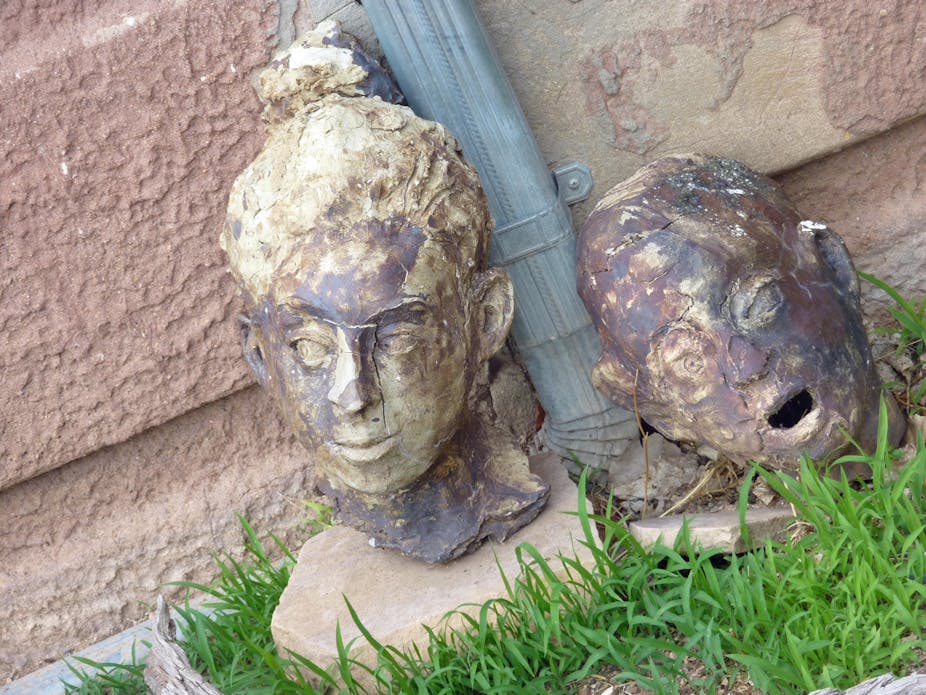If we want our children to do better academically and socially studying the arts could be the key to success. By ignoring arts education we could be jeopardising our kids’ opportunities to achieve and to be creative participants in the 21st century.
The release earlier this month of a national arts curriculum provides the perfect opportunity to radically change schools for the better to benefit our young people.
The creative life – in schools

After a long and sometimes difficult gestation, the Australian Curriculum for the Arts sees dance, drama, media arts, music and visual arts sit alongside other major subject areas available in the National Curriculum such as English and Mathematics.
This presents a massive opportunity for the creativity and imagination inherent in arts education to invigorate our schools and prepare our young people for the challenges that face them in the 21st century.
This document alone however will do nothing to improve the chances students have to make art, music and plays. This is particularly so if those in control of the education agenda ignore the strong research evidence that young people who participate in the arts achieve better academically and are socially better able to cope with the challenges of adolescence.
What we know about arts in schools
Research undertaken by my colleagues and me at the University of Sydney and published in the latest issue of the Journal of Educational Psychology involved primary and high school students from 15 Australian schools.
It examined their academic and personal wellbeing outcomes over two years. The research found that students who engaged with the arts in schools as active participants – as makers and doers of the arts – were more likely to do better in academic and social spheres than those who passively consumed the arts.
Anyone who teaches the arts knows why this is so.
The arts provide new ways of thinking and communicating that provoke creativity, imagination and possibility. It does this by allowing young people access to the tools of creation. These tools are central to the arts – but are also vital in a rapidly changing world that will require citizens not just to be consumers of “their” world but to be able to actively change the world.
We all need these tools to find creative, collaborative and imaginative solutions to some of our most pressing problems, such as global warming and overpopulation.
When young people sculpt, make films or choreograph dance in schools and other places they use the “languages” of the arts, such as musical notations, gestures and images, to make something new. In this process they have the opportunity to rehearse and rewrite the world – or at least their part of the world – in their own way.

That’s why the arts should not just be the parsley garnish on the academic sandwich, it must be a significant part of the meal.
When the demands of a crowded curriculum bear down on time and resources, we sometimes see a tendency to cut back on arts education. But our research shows that cutting arts could be compromising students’ academic potential and deny them a chance to achieve in other areas of their lives.
Understanding a bigger world
There is another, more compelling reason to make the arts a central aspect of schooling.
The songs, plays, dances, films and paintings young people make as part of their arts education show them that they are so much more than a test score. They show students that they and those around them have the capacity for beauty, for pathos, for pain, and allow them to see human experience through the eyes of other people in a play or through a film.

This is the hope of arts education: not that we will create a new generation of stars like Cate Blanchett or Hugh Jackman, although great arts education also does that.
The hope of those teaching the arts is that we will be able give young people access to an understanding of what humankind is capable of and expand their horizons beyond their town, their social group or their nation.
The question is: do we as a community have the imagination to move the arts to the centre of learning alongside other major subject areas? The new Australian Curriculum for the Arts will be a success if we grasp the opportunity to use this document as a way to make schools more creative, more imaginative places to learn and grow.
As our research demonstrates, embracing the arts will also have the effect of providing enhanced academic outcomes and make our young people better able to cope socially with the challenges they face. We have an exciting opportunity ahead of us to change schooling into a more creative, innovative space through the new national curriculum.
But the question remains: do we have the imagination to make it happen?

